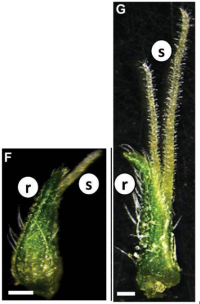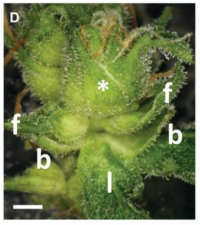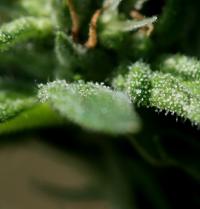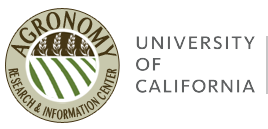Hemp Reproductive Plant Parts
Quick Summary
- It’s important to understand some of the basic plant biology behind our growers’ decisions. Here is a review of reproductive biology specialised to hemp.

As mentioned in the section on Vegetative Plant Parts hemp in the wild is dioecious. In dioecious hemp male plants flower between one to three weeks before female plants maximizing cross pollination. Newer cultivars thathave been developed for fiber or oilseed (biotypes that are benefited by pollination) can be monecious and self-pollinate. Other cultivars that are developed for cannabinoid extractions are often modified to produce only female plants. You can often buy feminized seed from these plants.
Complete Flowers
A complete flower has both male and female reproductive parts in the same flower. Dioecious plants such as hemp have incomplete flowers, pistillate female flowers on female plants and staminate male flowers on male plants. Fig 1.
Pistillate Flowers
Female flowers have pistils, structures containing a stigma, style and ovary. The stigma is a landing pad for the pollen which travels down the style and into the ovary which, if fertilized becomes a seed. The rest of the flower is made up of highly specialized leaves. The non-reproductive part consists of sepals, located at the base of the
Flower and the Petals.


Hemp flowers have the same basic biology as all other pistillate flower structures however they have a few notable parts. The solitary flower often develops along the main shoot of the plant. During flower development the stigmata grows becoming visible outside of the perigonal bract. Fig F and G depict a single early and late flower respectively. Notice how the perigonal bract develops under each flower and grows to envelop the ovary and the stigma grows longer.
Plant and Inflorescence Architecture:
Hemp flowers develop as inflorescences; a group of flowers along the stem. In female hemp plants the flowers are arranged in dense clusters on either side of the stem in a form called a compound raceme(Fig 3).
Mature hemp inflorescences are made up of densely packet phytomeres, a structural unit of the plant body containing its leaves, buds and auxiliary nodes. In flowers, a bud is composed of a short stem with embryonic flower parts. In Fig 4. You can see a phytomere (marked with the Asterix) surrounded by two solitary flowers (marked f) and a supported by two bracts (marked b) and a reduced leaf (l). A phytomere is just the name for the unit of a plant made up of a node, and its leaf and auxiliary buds.
Plant and inflorescence architecture differ between varieties and because of plant to plant genetic variation. It is safe to say that the inflorescences of female hemp can be defined as a highly branched compound racemes, however some plants produce terminal flowers and some do not. Flowering and branching patterns can be influenced by many factors, including stress, plant hormones or genetic mutations.
Staminate Flowers
Male flowers have stamens. It consists of an anther, the pollen sac, and a long supporting filament that hold the stamen up so the pollen can be dispersed. The non-reproductive parts are the same. In hemp male plants flower a few weeks earlier than female flowers leading to more outcrossing during cross pollination and greater genetic diversity.


Unlike female flowers male hemp forms loose determinate inflorescences which each floret held away from the stem on a short, drooping stalk. Fig ?. The male flowers are greenish or whiteish with five petals and prominent stamens that produce large amounts of small dry pollen that is highly attractive to bees
Trichomes
Another notable part of hemp flower are the trichomes, visable as the small white hairs in figure 2, not be confused the stigmata sticking out of the flower. Hemp has three types of glandular trichomes; bulbous sessile and stalked. Sessile and stalked trichomes have higher cannabinoid concentration. Anecdotally growers use both the color of the trichomes and of the stigmata to identify when the plant is nearing harvest.
Works Cited:
Canadian Food Inspection Agency. (2021, March 3). The Biology of Cannabis sativa L. . Canadian Food Inspection Agency. https://inspection.canada.ca/plant-varieties/plants-with-novel-traits/applicants/directive-94-08/biology-documents/cannabis-sativa-l-/eng/1612447522753/1612447718390#a26
Oregon State University Extension Service, (January 2020), Vegetative Plant Parts, OSU Extension Service. https://extension.oregonstate.edu/gardening/techniques/vegetative-plant-parts

Oregon State University Extension Service, (January 2020), Vegetative Plant Parts, OSU Extension Service. https://extension.oregonstate.edu/gardening/techniques/reproductive-plant-parts
Spitzer-Rimon B, Duchin S, Bernstein N, Kamenetsky R. Architecture and Florogenesis in Female Cannabis sativa Plants. Front Plant Sci. 2019 Apr 2;10:350. doi: 10.3389/fpls.2019.00350. PMID: 31001293; PMCID: PMC6454139.
UVED Plant Growth Archetecture and Productio Dynamics, Phytomers and The Leafy Axis Levils, Greenlab, https://greenlab.cirad.fr/GLUVED/html/P1_Prelim/Bota/Bota_struct_002.html
